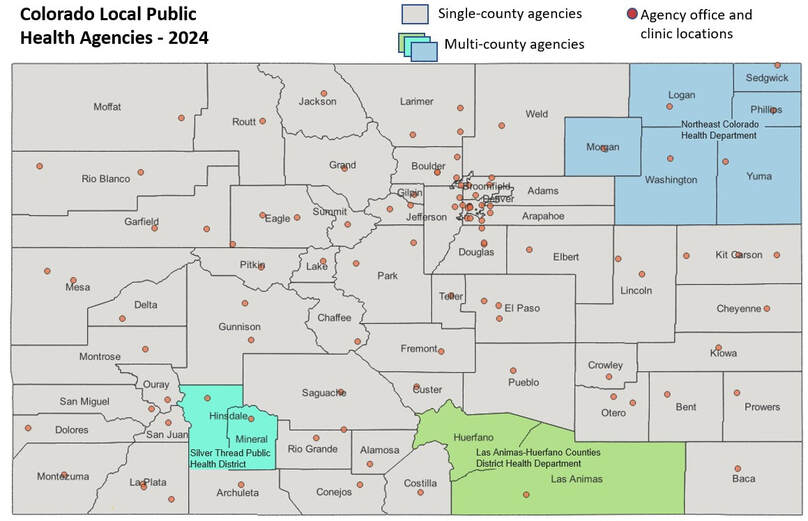Local Public Health in Colorado
|
Local Public Health Agencies (LPHAs)
Colorado has a decentralized public health system wherein each of its 64 counties are required to either operate a local public health agency or participate in a district public health agency. Currently, 56 local public health agencies, some representing multiple counties, provide a set of Core Public Health Services, and additional services customized to their community needs and resources. LPHAs are lead by a public health director, who is appointed by a local board of health. Local boards of health (LBOHs) provide administrative, policy, and financial oversight to their local public health agencies.
- Learn more about LBOHs.
- Find your LPHA here.
History of Local Public Health in ColoradoTo understand how Colorado’s governmental public health system is changing, it is important to know our history and how our system has developed over time. This brief history, adapted from the 1969 publication “Health in Colorado: The First One Hundred Years” and most recently revised in 2021, provides key insight into our current and evolving system of public health. Read it here. Some historic system turning points:
|
© 2024 Colorado Association of Local Public Health Officials
1999 Broadway, Suite 600
Denver, CO 80202


